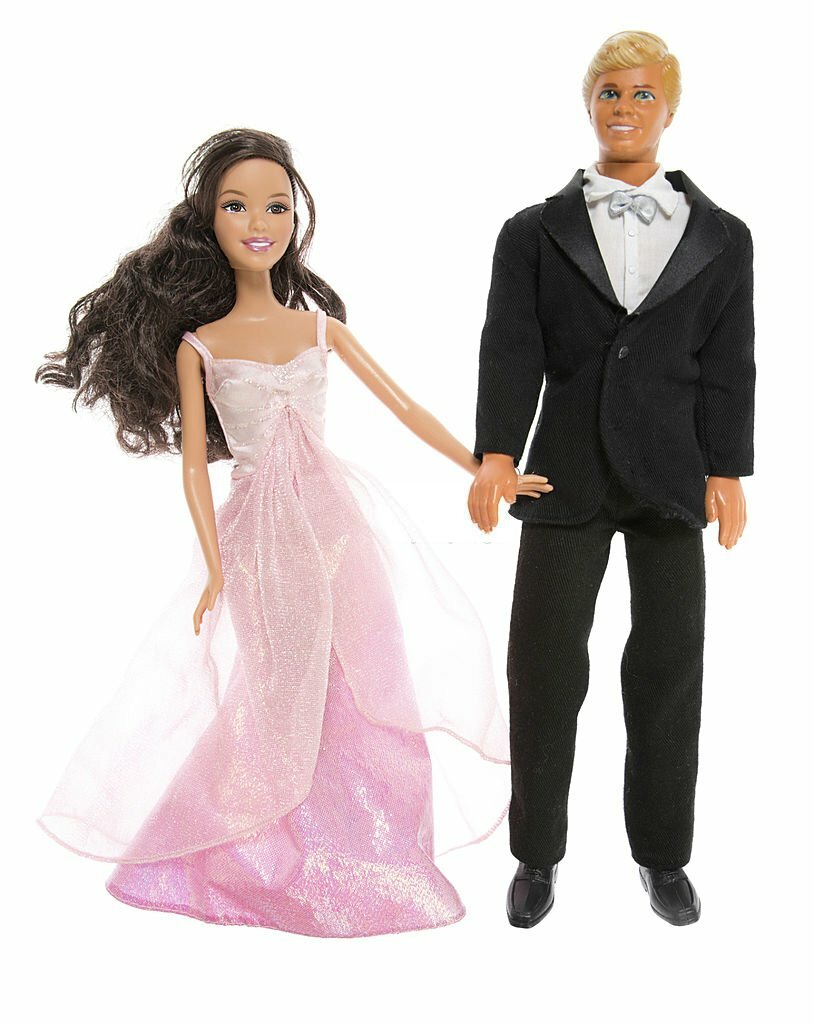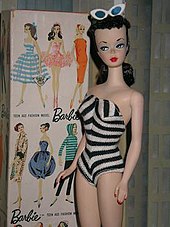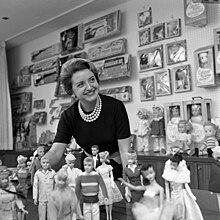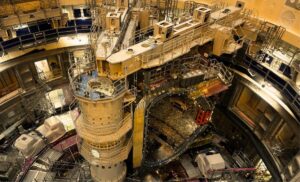 Pin
Pin Barbie, undoubtedly one of the most recognized dolls in the world, has had a profound impact on the toy industry and popular culture since her debut in 1959. This article explore into the fascinating story of Barbie’s creation and the remarkable woman behind her success, Ruth Handler.
The Brainchild of Ruth Handler
Barbie was the brainchild of Ruth Handler, a pioneering entrepreneur, and the co-founder of Mattel, a leading toy company. Born on November 4, 1916, in Denver, Colorado, Ruth Handler possessed an innovative spirit and a keen eye for child development. As her own daughter grew older, Ruth noticed how she and her friends enjoyed playing with paper dolls, often imagining different lifestyles and career paths for them. This observation became the inspiration for her most famous creation, Barbie.
The Birth of Barbie
Ruth Handler noticed a gap in the market for a doll that allowed children to imagine themselves in different roles beyond traditional notions of femininity. In 1956, Ruth and her husband Elliot Handler, along with their business partner Harold Matson, introduced a prototype doll called Bild Lilli at the Nuremberg Toy Fair in Germany. While the doll was initially marketed more towards adults, it sparked the idea for a child-friendly version.
In 1959, Ruth Handler set forth on a path to create a doll that could appeal to young girls and inspire their dreams. She collaborated with an innovative team of designers and engineers at Mattel, working closely with Jack Ryan, a doll creator, and designer, to bring her vision to life. Through meticulous research and design, they transformed Bild Lilli into Barbie, named after Ruth Handler’s daughter, Barbara.
Barbie's Evolution and Success
When Barbie made her debut at the American International Toy Fair in New York on March 9, 1959, she was an instant hit. With her stunningly stylish fashion sense, innovative accessories, and a wide variety of careers, Barbie quickly became a cultural phenomenon. She embodied a sense of independence, ambition, and limitless possibilities for girls.
Over the years, Barbie’s evolution has mirrored the changing times and societal values. She has adapted to encompass various ethnicities, body types, and disabilities, making her more inclusive and reflective of the diverse world we live in.
Ruth Handler's Legacy
Ruth Handler’s visionary creation of Barbie not only revolutionized the toy industry but also empowered millions of girls worldwide. She recognized the potential for toys to inspire imagination and lifelong dreams, casting aside outdated gender stereotypes. Ruth believed in the power of play and the importance of providing children with the tools to aspire, explore, and be confident. Her legacy lives on in Barbie’s continued success and the positive impact the doll has had on generations of young girls.
Barbie has become more than just a doll; she represents an enduring symbol of girl power, imagination, and diversity. Ruth Handler’s innovative and forward-thinking mindset was instrumental in shaping the doll industry and creating a cultural icon that continues to inspire future generations. Through her creation of Barbie, Ruth Handler accomplished what she set out to achieve—providing children with a toy that transcends boundaries and encourages limitless possibilities.
Ruth Handler's Inspiration
Ruth Handler, co-founder of the popular toy company Mattel, observed her daughter Barbara playing with paper dolls. Through her keen observation, Ruth noticed that Barbara was particularly engaged in imaginative play with these dolls. She observed that Barbara enjoyed pretending to be a grown-up and acting out various scenarios with the paper dolls, such as dressing them up, taking them on adventures, and creating imaginative stories.
This observation led Ruth Handler to realize a gap in the toy market. She recognized that there was a need for a three-dimensional doll that could provide more realistic play experiences for children. Inspired by her daughter’s enjoyment and creativity with paper dolls, Ruth Handler conceptualized the idea for a doll that would reflect real life and allow girls to engage in role-playing activities.
This pivotal moment of observation ultimately led to the creation of the iconic Barbie doll, which revolutionized the toy industry and became a cultural phenomenon. Ruth Handler’s astute observation of her daughter’s play preferences played a significant role in shaping the development of one of the most successful toys of all time.
Barbie and Ken: An Iconic Pair
Barbie, a fashion doll created by the American toy company Mattel, has been an iconic figure in the world of toys since her debut in 1959. With her extensive wardrobe, glamorous accessories, and impeccable style, Barbie quickly became a symbol of beauty, fashion, and endless possibilities. However, no Barbie doll could be complete without her equally popular and attractive male counterpart, Ken.
Ken, introduced by Mattel in 1961, was created as a suitable companion for Barbie, thus establishing a sense of balance in the Barbie world. With his chiseled features, smooth blond hair, and dapper fashion sense, Ken was designed to embody the idealized masculine image. Together, Barbie and Ken set the standard for an ideal couple, representing the epitome of beauty, fashion, and romance.
 Pin
Pin Barbie and Ken’s history as a couple is as rich and diverse as their individual stories. They have gone through numerous makeovers and transformations over the years, symbolizing the changing societal norms and trends. This adaptability has allowed them to remain relevant and loved by several generations.
Barbie and Ken have also been featured in a wide range of careers, highlighting their versatility and ambitions. From doctors and astronauts to fashion designers and business executives, these dolls inspire children to dream big and believe that anything is possible. Their ability to embrace and excel in different occupations has been instrumental in presenting a positive impact on young minds, encouraging them to break stereotypes and pursue their passions.
The appeal of Barbie and Ken extends beyond just their physical appearances and to the narratives they inspire. Their love story, although fictional, is often an integral part of the imaginative play experience for children. Playing with Barbies and Kens allows kids to explore countless scenarios, expressing their creativity, and developing their social and communication skills.
However, Barbie and Ken have not been without their share of controversy. Critics argue that Barbie’s unrealistic body proportions have contributed to creating unrealistic beauty standards for young girls. This criticism has led Mattel to take steps towards inclusivity, introducing more diverse body shapes, skin tones, and hairstyles to its doll lineup. Ken, too, has undergone body transformations and now comes in different ethnicities, hairstyles, and fashion styles, promoting increased representation and inclusivity.
Despite the controversies, Barbie and Ken cannot be denied their status as cultural icons. They have left an indelible mark on the world of toys and popular culture as a whole. Barbie’s influence transcends her doll form, expanding into movies, TV shows, and even collaborations with renowned fashion designers. This constant evolution and cultural relevance is what has made Barbie and Ken beloved by fans across the globe.
Barbie and Ken are more than just dolls; they represent an iconic couple that has captivated generations with their beauty, fashion, and love story. They symbolize the possibilities and dreams that every child should cherish, encouraging them to pursue their passions and break societal norms. As Mattel continues to adapt to changing times, Barbie and Ken will undoubtedly remain timeless figures, inspiring children for generations to come.
The first Barbie doll
 Pin
Pin The first Barbie doll, also known as Barbie #1, was introduced to the world on March 9, 1959, at the American International Toy Fair in New York City. It was created by Ruth Handler, co-founder of the toy company Mattel, who got the inspiration for a three-dimensional adult-bodied doll while observing her own daughter, Barbara, playing with paper dolls that had adult features and outfits. Ruth believed that there was a void in the market for a more grown-up doll, as the options available at the time were primarily baby dolls or childlike figures.
The first Barbie doll was 11.5 inches tall and had an adult figure, unlike the standard toddler-shaped dolls of the era. She had an elegant and glamorous appearance, with a slim waist, curved hips, and long legs. Her features were meticulously designed, with blue eyes, arched eyebrows, and full red lips. Barbie’s golden hair was styled in a fashionable ponytail and held in place with a topknot. She was dressed in a black-and-white-striped swimsuit, wore heels, and accessorized with cat-eye sunglasses and hoop earrings. The swimsuit was available in either a zebra pattern or in a striped design with a bandeau top.
One of the unique aspects of the first Barbie doll was her extensive wardrobe. Ruth Handler understood the importance of fashion and wanted Barbie to reflect the changing styles and trends of the time. The doll was initially marketed as a fashion model, and her wardrobe included 22 different clothing options, ranging from casual daywear to evening gowns. These outfits were sold separately, allowing girls to mix and match and create their own sense of style.
Despite initial skepticism from toy buyers and retailers who doubted the appeal of an adult-like doll, Barbie became an instant success. Her popularity soared, and she quickly became a cultural icon, symbolizing fashion, beauty, and independent women. Barbie opened up a world of imagination for young girls, encouraging them to dream big and aspire to various professional roles and careers.
In the years following her launch, Barbie continued to evolve. More clothing options were added to her wardrobe, and new versions of the doll with different hairstyles, face molds, and ethnicities were introduced. Today, Barbie has become a global phenomenon, with numerous collectors, collectors’ editions, and spin-offs, including movies, books, and video games.
The first Barbie doll holds a special place in history as it paved the way for the countless variations and iterations of the iconic doll that followed. Its significance lies not only in its aesthetics but also in the cultural impact it had on society, empowering generations of girls to believe that they can be anything they want to be.
 Pin
Pin Through the Rainbow: The Enchanting Journey of Barbie
“Through the Rainbow : The Enchanting Journey of Barbie” unveils the incredible story of Barbara Millicent Roberts, better known as Barbie, a timeless doll who has captured the hearts and imagination of generations. This fictional biography explores Barbie’s early life, her rise to fame, and her remarkable adventures.
Chapter 1: Origins and Childhood
Born in the idyllic town of Willows, young Barbie grew up in a loving family. Her parents, George and Margaret Roberts, recognized her natural beauty and charisma from an early age. Barbie’s childhood was marked by moments of creativity and imagination. With her vivid imagination and a knack for inventing stories, she frequently entertained her friends and family with her endless tales.
Chapter 2: A Star in the Making
Barbie’s journey as a fashion icon started when she was scouted by a modeling agency at the age of 17. Her unique style and charm caught the attention of fashion designers around the world. She quickly rose to stardom, becoming a symbol of beauty and elegance.
Chapter 3: Dreamhouse Adventures
Barbie’s zest for life led her to build her iconic Dreamhouse, a magical place filled with imagination and endless possibilities. Through her Dreamhouse Adventures, Barbie empowered young girls to dream big, showcasing that they can be anything they set their minds to. Along with her beloved friends, including her sister Skipper, best friend Teresa, and loyal pet dog Pupcorn, Barbie embarked on thrilling adventures that spanned from exploring uncharted islands to solving mysteries.
Chapter 4: The Fashion Empire
As Barbie’s fame grew, she diversified her interests and became a successful entrepreneur. She established her own fashion line, showcasing her impeccable taste and stylish designs. Barbie’s influence even reached the real world, as she inspired countless young designers to pursue their dreams in the fashion industry.
Chapter 5: Exploring the World
Eager to experience the wonders of the world, Barbie embarked on numerous globetrotting adventures. From the bustling streets of Paris to the exotic landscapes of Japan and the cultural depths of Africa, Barbie immersed herself in diverse cultures, learning and spreading messages of unity and acceptance along the way.
Chapter 6: A Heart for Charity
Throughout her glamorous life, Barbie never forgot the importance of giving back. She devoted her time and resources to various charitable organizations, using her influence to raise awareness and support for causes that aimed to improve the lives of children and disadvantaged communities. Barbie became a symbol of generosity and kindness, inspiring others to make a difference in the world.
The fictional biography “Through the Rainbow : The Enchanting Journey of Barbie” encapsulates the extraordinary life of Barbara Millicent Roberts. Barbie’s journey from a small-town girl to an iconic figure and a fashion mogul is a testament to the power of dreams, creativity, and resilience. Her legacy as a role model for young children continues to live on, reminding the world that anything is possible with determination and a sprinkle of imagination.
Companions and relatives of Barbie
Mattel, the American toy manufacturing company, has long been synonymous with the iconic Barbie doll. Over the years, Barbie has evolved to become more diverse and inclusive, and Mattel has developed a range of companions and relatives to accompany the beloved doll.
One of the most notable additions to Barbie’s world is her diverse range of friends, known as the Barbie Fashionista line. These friends represent various ethnicities, body shapes, and styles, reflecting the diversity of the real world. These companions have different names, personalities, and backgrounds that allow children to explore different cultural perspectives and experiences.
Among Barbie’s friends, there are prominent characters like Teresa, a Hispanic friend who is passionate about animal rights and sports. There’s also Raquelle, a fashion model and sometimes rival to Barbie, highlighting themes of healthy competition and friendship. Christie, another close friend, is an African American doll, whose character has evolved over time to focus on social activism and empowerment.
Expanding beyond just friends, Barbie also has relatives who enrich her story. One such relative is Skipper, Barbie’s younger sister. Skipper has been an integral part of Barbie’s world since the 1960s and has undergone numerous transformations to maintain relevance and relatability. As Skipper grew older, her role changed to emphasize the importance of developing independence and self-identity among young girls.
Another relative in Barbie’s family is Chelsea, Barbie’s youngest sister. Chelsea represents the childlike wonder and curiosity, engaging younger kids with relatable storylines centered around family and friendship. She also accompanies Barbie in various playsets, enabling children to engage in imaginative and collaborative storytelling.
In addition to these relatable characters, Mattel has gone a step further to create a disability-inclusive Barbie line. This initiative aims to empower children with disabilities by providing representation through dolls that reflect their experiences. Dolls like the Fashionista line have options such as removable prosthetic limbs, wheelchair compatibility, or even dolls with vitiligo or alopecia. This range showcases Mattel’s commitment to inclusivity and promotes positive societal change.
Mattel’s creation of a diverse range of companions and relatives for Barbie reflects the company’s dedication to promoting inclusivity, empowering children, and reflecting the ever-changing world we live in. By expanding the Barbie character universe to include friends from different backgrounds and family members with various storylines, Mattel gives children the opportunity to learn, grow, and immerse themselves in a more diverse and enriched play experience.
Barbie, and the Times Square Alliance
In a unique and eye-catching marketing stunt, a section of Times Square in New York City was temporarily renamed “Barbie Boulevard” for a week. This transformation was part of a collaboration between the iconic doll brand, Barbie, and the Times Square Alliance, aimed at celebrating Barbie’s influence as a cultural icon.
The section of Times Square selected for this renaming was a prominent stretch of Broadway, between 44th and 45th streets. This area sees a massive influx of foot traffic and is known for its vibrant atmosphere and bright, flashy billboards. Renaming it “Barbie Boulevard” brought an extra splash of color, excitement, and playful energy to an already bustling neighborhood.
To bring Barbie’s world to life, the entire block was adorned with a plethora of visually stunning decorations and installations inspired by the doll. Gigantic, larger-than-life replicas of Barbie’s signature pink shoe, dream car, and iconic logo were strategically placed throughout the area. The surroundings were also transformed into a whimsical suburban setting, complete with pink picket fences, lush green lawns, and vibrant floral arrangements.
The billboards that usually displayed advertisements for various brands were temporarily replaced with stunning visuals showcasing Barbie’s diverse range of dolls, fashion collections, and career options. Each billboard highlighted Barbie’s long-standing commitment to empowering young girls and encouraging them to dream big.
As visitors strolled along Barbie Boulevard, they were treated to a multitude of engaging activities and experiences. Pop-up shops were set up, offering exclusive Barbie merchandise, limited-edition dolls, and collector’s items. Rows of life-sized Barbie dolls were displayed, showcasing Barbie’s evolving styles and body shapes, as well as representing inclusivity and diversity.
Interactive installations were also a highlight of Barbie Boulevard. Visitors had the opportunity to participate in a virtual fashion show, where they could create their own Barbie avatar and try on various stylish outfits. Additionally, designated play zones were created, allowing children to unleash their imagination and engage in role-playing activities with Barbie dolls and accessories.
To celebrate the renaming of the street, a grand opening ceremony was held, featuring celebrity appearances, live performances, and fashion showcases. Various influential figures from the worlds of fashion, entertainment, and women’s empowerment spoke about Barbie’s impact on society and her role in inspiring future generations.
The temporary renaming of the section of Times Square to Barbie Boulevard created quite a buzz in the media and among tourists and locals alike. It served as a reminder of Barbie’s enduring cultural significance and her ability to transcend generations. This marketing initiative not only brought joy and excitement to the bustling streets of New York City but also reinforced Barbie’s message of breaking barriers, promoting diversity, and encouraging young individuals to dream big and pursue their passions.

Barbie has faced several controversies and criticisms regarding her body proportions and reinforcement of gender stereotypes. Some of the major concerns include:
1. Unrealistic body proportions: Barbie has been criticized for having an unrealistic and unattainable body shape, often referred to as the “Barbie body.” With her extremely thin waist, long legs, and oversized bust, many argue that this promotes an unrealistic and unhealthy body image for girls and women. Critics argue that Barbie’s proportions contribute to body dissatisfaction and can potentially lead to low self-esteem, eating disorders, and other negative body image issues.
2. Limited representation of body diversity: Barbie dolls have historically lacked diversity in terms of body types, skin tones, and hair textures. The lack of representation of different body types reinforces a narrow and unrealistic standard of beauty. Critics argue that this omission excludes and marginalizes individuals who do not fit within the traditional Barbie mold and contributes to feelings of exclusion and lack of acceptance.
3. Reinforcing gender stereotypes: Barbie has faced criticism for perpetuating traditional gender stereotypes in terms of occupation, roles, and clothing. Critics argue that the vast majority of Barbie dolls depict femininity in a limited and traditional sense, often portraying her in glamorous and fashion-centric roles, which can reinforce limiting stereotypes about women’s worth being tied to their appearance and traditional feminine pursuits.
4. Impact on children’s play and self-perception: Some studies suggest that playing with Barbie dolls may influence girls’ perceptions of their abilities and career aspirations. Due to the limited range of professions commonly associated with Barbie and her emphasis on appearance, it is argued that girls might internalize certain stereotypes about what they can achieve and what is expected of them.
5. Parental concerns: Parents also express concern about the potentially negative impact Barbie can have on their children’s self-perception and overall development. Some parents worry that Barbie’s portrayal of an idealized feminine body and lifestyle might create unrealistic expectations in the minds of children, leading to dissatisfaction and low self-esteem.
Mattel, the company that manufactures Barbie, has acknowledged these concerns and has made attempts in recent years to address them. They have introduced more diverse Barbie dolls with different body types, skin tones, and hair textures, as well as expanded the range of professions and roles Barbie can represent. However, the criticisms and controversies surrounding Barbie’s body proportions and reinforcement of gender stereotypes continue to be debated.
Barbie's controversial representation of gender roles and stereotypes has had a significant influence on children's toys and media in several ways:
1. Expanding diversity and inclusivity: Critics argue that Barbie perpetuates narrow and unrealistic beauty standards, promoting a certain body type, skin color, and hair texture. As a result, there has been a heightened push for more diverse and inclusive representation in children’s toys and media. Companies have started to create toys featuring different ethnicities, body shapes, and abilities to reflect a wider range of children.
2. Empowering girls through career representation: Barbie dolls historically portrayed unrealistic and limited career options for girls, often being associated with roles like fashion models or princesses. However, in recent years, Barbie has expanded her career choices to include fields traditionally dominated by men, such as engineering, architecture, and computer science. This has encouraged other toy manufacturers to follow suit and offer toys that empower girls by providing a broader range of career options.
3. Encouraging positive body image: The criticism of Barbie’s unrealistic body proportions has led to an increased emphasis on promoting positive body image in children’s toys and media. This includes creating dolls with more realistic body shapes and sizes, as well as providing messages about self-acceptance and diversity in body types.
4. Challenging gender stereotypes: Barbie’s influence has also sparked conversations about gender stereotypes in children’s toys and media. There has been a growing movement to challenge traditional gender roles by offering more gender-neutral toys and incorporating diverse representations of gender identities. This includes toys that are not explicitly marketed towards a specific gender and media content that depicts a wide range of gender expressions.
Barbie’s controversial representation of gender roles and stereotypes has played a significant role in stimulating changes in the toy industry and media landscape. There is now a greater emphasis on diversity, inclusivity, positive body image, and challenging traditional gender norms, which aims to provide children with more empowering and open-minded play experiences.
Frequently Asked Questions - The Genesis of Barbie: An Iconic Doll Created by Ruth Handler
Barbie is a popular fashion doll introduced by the American toy company Mattel in 1959. It quickly became one of the most iconic and recognizable dolls in the world, known for its glamorous appearance and extensive range of accessories and playsets.
A standard Barbie doll is approximately 11.5 inches (29 cm) tall. However, over the years, Mattel has also produced dolls in various sizes, including taller and smaller versions.
Barbie was created by Ruth Handler, the co-founder of Mattel, who was inspired by a German doll called Bild Lilli. The doll was named after Ruth Handler’s daughter, Barbara.
Barbie was initially created as a fashion doll aimed at young girls to encourage them to imagine and role-play various careers and lifestyles. The doll’s versatility allows children to engage in imaginative play, nurturing creativity and storytelling.
Barbie has an extensive wardrobe with countless outfit options. From glamorous evening gowns to casual everyday clothing, Barbie’s fashion choices cover a wide range of styles, including formal wear, sports attire, swimwear, and various themed costumes.
Yes, one of the main features of Barbie dolls is the ability to change their clothes easily. The majority of Barbie dolls come with removable clothing, allowing children to mix and match outfits as they please.
Over the decades, Mattel has released an enormous variety of Barbie dolls. From different ethnicities to various career choices and even iconic characters from movies and TV shows, the range of Barbie dolls is vast, with numerous limited editions and collector’s editions available.
Barbie dolls were initially marketed towards girls; however, they are not exclusively for one particular gender. Boys can also enjoy the play experience and creativity that Barbie dolls offer. In recent years, Mattel has been actively promoting inclusivity and diversity, encouraging all children to play with Barbie dolls.
Yes, Barbie dolls can be personalized in many ways. Some dolls come with different hairstyles that can be changed, while others allow you to modify accessories and add personal touches. Many Barbie dolls are also customizable, with separate fashion packs and additional accessories available for purchase.
No, while the standard Barbie doll is approximately 11.5 inches tall, Mattel has released different sizes over the years. These include taller dolls like the Barbie Fashionistas line, which features dolls with various body shapes and heights, including petite, tall, and curvy versions.
In recent years, Mattel has made efforts to improve the sustainability of Barbie dolls. They have introduced elements such as recycled plastics and smaller packaging to reduce environmental impact. Additionally, the company has launched a “Dream Gap Project” to empower girls and address societal barriers that limit their potential.
Elements of Barbie dolls can be recycled, depending on the materials used. The plastic components, such as the body, can often be recycled, while other parts such as fabric clothing may need to be disposed of separately. It is advisable to check local recycling guidelines for specifics.
Yes, Mattel has recognized the importance of educational content and offers various media platforms, including websites and YouTube channels, dedicated to Barbie. These platforms provide a range of content, including games, videos, and articles, aiming to inspire and educate children.
While Barbie dolls are generally intended for children aged three and above, adult supervision is recommended for younger children due to small parts that may present choking hazards. Mattel also produces dolls specifically targeted at younger age groups, with simpler designs and larger, safer accessories.
Yes, certain Barbie dolls, especially those from limited editions or featuring iconic characters, can become valuable collector’s items over time. Rarity, condition, and the popularity of a particular doll often determine its value in the collector’s market.































